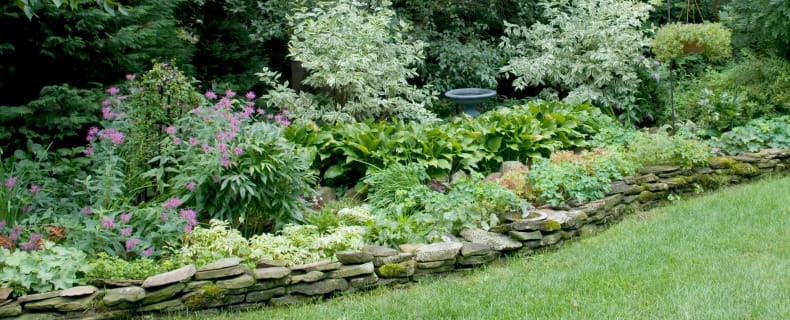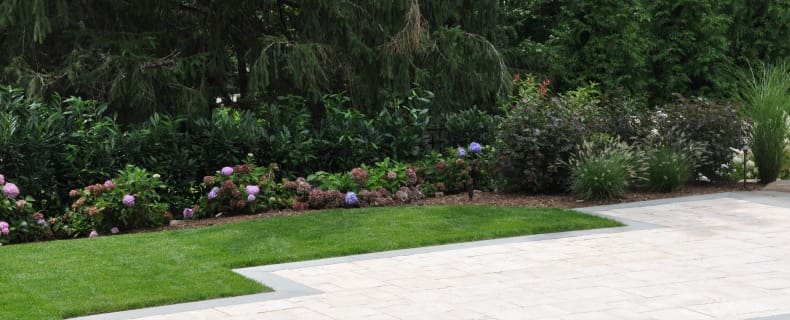Maintaining a healthy lawn and landscape is the best way to prevent lawn and plant disease. In Northern New Jersey, there are a variety of plant diseases that can attack your lawn and landscape. Many of these diseases don’t invade in cold weather, but a warm winter allows them to invade grass and plants sooner and cause significant damage that shows later up in the spring.
Climate, weather conditions and the type of grass and plants you have in your landscape can contribute to increased plant disease during warm winter weather. If you have turf grass and landscape plants that thrive in cool temperatures, they may be negatively affected by unexpected warm winter temperatures.
Climate Conditions
Although you can’t control the weather, it does have a big impact on the health of your lawn and landscape. Bergen County has distinct climate conditions most of the year. On a yearly average, there are 207 days of sunshine, 118 days of rainfall with 46 inches of rain and 27 days of snowfall. The average high summer temperature is about 86 degrees, and the average low winter temperature is about 22 degrees. If these climate conditions or weather patterns change, your lawn and landscape can become stressed from unexpected cold, snow and ice, rainfall, sun, heat or drought. Any of these stressful conditions can make your lawn and landscape more susceptible to significant damage from plant disease.
Plant diseases are caused by fungal infections, which are more typical in warm weather. Sun, heat and lack of water all contribute to fungal growth and spread of disease. Northern NJ typically has very cold winters with abundant rain, snowfall and icy conditions that make it difficult for fungal infections to take hold and thrive. However, in a warmer winter, like we experienced this year, fungal infections are more likely to invade and spread quickly causing an increase in plant disease. The application of proper fungicides will be necessary to get damage from plant disease under control. Talk to a landscape professional about the benefits of organic fungicides to control different types of plant disease.

Type of Turf Grass
Planting the right type of turf grass has a huge impact on plant disease. If you have the wrong type of grass for your climate and weather conditions, your lawn and landscape are much more susceptible to plant diseases and damage. Grasses are divided into two main types – cool-season grasses and warm-season grasses. In Northern New Jersey, most lawns are cool-season grasses that grow best in cooler climates. Warm-season grasses are typically found in western or southern regions of the country with mild, temperature year-round temperatures.
Cool-Season Grasses – Cool-season grasses prefer mild, wet winters and do well in colder climates with snow and ice. They grow best in the fall in areas with at least 30 inches or more of yearly rainfall. Cool-season grasses include:
- Bentgrass – Originally cultivated for use on golf course greens, creeping bentgrass is a perennial cool-season grass that forms a dense mat. Creeping bentgrass does not tolerate hot, dry weather.
- Kentucky Bluegrass – Kentucky bluegrass, the most common cool-season grass, creates a high quality lawn. It has a moderate growth pattern, and will go dormant in hot, dry weather as well as during the cold winter months.
- Rough Bluegrass – A type of bluegrass, rough bluegrass is lighter green in color and the leaves have a tendency to lie flat in one direction. This grass thrives in cool, moist conditions and with regular lawn maintenance.
- Fescue – Fine and tall fescue has narrow leaves that resemble pine needles. A typical cool-season grass, fescue grows best in cool climates with adequate shade. It tends to wilt easily in warm weather.
- Perennial Ryegrass – Ryegrass grows best in moist, cool environments. It’s a cool-season grass found in many Bergen County lawns. It does not do well in hot, sunny climates.
Warm-Season Grasses – Warm-season grasses, including buffalo grass, Bermuda grass, St. Augustine grass and zoysia grass, prefer year-round temperate climates with hot, humid and dry weather, with 20 inches or less of yearly rainfall. They are not typically planted in Northern NJ lawns.

Common Plant Diseases
Dry Rot – Dry rot attacks daffodils, freesias, and gladiolus. After the initial infection, decay spreads up to the leaf bases, causing leaves to turn yellow and die. Plants then have stunted growth and fail to bloom. Bulbs develop dark brown, sunken lesions with raised edges.
Leaf Spot – Spots can vary from tiny, discrete dots and raised areas to irregular yellow or brownish patches that cover most of the leaf surface. Leaf spot on plants can be caused by fungal or bacterial pathogens, insects and mites.
Powdery Mildew – Powdery mildew can form or leaves, stems, flowers and fruit. On rose bushes, crape myrtles and sycamores, it often attacks new growth and causes dwarfed plants. Infected leaves generally die and drop the plant earlier than healthy leaves.
Smoulder – Smoulder infects flower bulbs, both in storage and in the ground. When infected bulbs begin to grow, brown, streaked lesions first appear on leaf tips, then infected leaves curl up and begin to die. Diseased plant tissue may show woolly gray growth and small black sclerotia, especially near the soil.
When warmer than usual winter temperatures occur, a variety of lawn and landscape problems may result. Outdoor pests and plant disease normally held in check by cold weather may increase, causing significant damage to your lawn and landscape plants. Invasive weeds will have a longer season to grow and spread. Life cycles of beneficial insects may get out of sync with the pests they help to control. If you try to plant earlier than normal to take advantage of the warmer winter weather, you may be surprised by freeze damage if colder winter temperatures resume. If warmer winter temperatures have caused problems with plant disease in your lawn or landscape, talk to a Bergen County landscape professional about organic solutions to treat the problems and an Integrated Pest Management Program as part of your regular lawn care and maintenance. No matter what the seasons bring, prevention is always the best method to control outdoor pests and plant disease.

